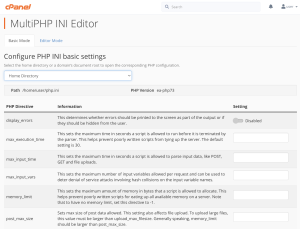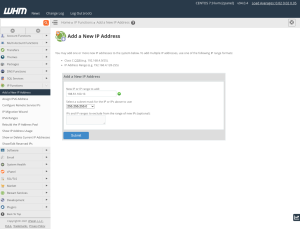
It’s happened to most of us, you just launched a marketing campaign and went to check your sales and your website is a blank white screen! If it hasn’t happened to you yet, read on.
Hosting outages can send you into panic mode, especially if you run an e-commerce website. The loss of potential income can send you into a frenzy and keep you on hold with your hosting company for hours at a time – to quote Tom Petty, “The waiting is the hardest part.”
Downtime can also hurt your reputation. Amazon News reports 88% of online consumers are less likely to return to a site after a bad experience. We can imagine an even higher rate if the user can’t even connect to your website.
There is no real solution to hosting outages; it’s just a fact of the industry. The uptime of hosting companies has increased each year and is now better than ever, but there is still a potential outage in your future.
Table of Contents
- 1 What is the average expected uptime of a hosting company?
- 2 How can I check if my website is actually down?
- 3 How to prepare before your site goes down:
- 4 Let’s breakdown the basics of hosting plans and uptime:
- 5 What should you do when your site goes down:
- 6 Do hosting companies reimburse your company for losses due to downtime?
- 7 Conclusion:
What is the average expected uptime of a hosting company?
As you would expect, nobody is perfect, but hosting companies work tirelessly to make sure your website is online. Server uptime is the amount of time a server stays active and online. Most hosting companies offer a guaranteed amount of server uptime per year. One of the most common uptime guarantees is 99% uptime. At first glance, this seems perfectly acceptable, but when you do the math, you quickly realize that equates to over three days of yearly downtime. A Hosting company’s Service Level Agreement (SLA) level of 99 % uptime/availability results in the following periods of allowed downtime/unavailability:
- Daily: 14m 24s
- Weekly: 1h 40m 48s
- Monthly: 7h 18m 17s
- Yearly: 3d 15h 39m 29s
So, why not 100% uptime? A straightforward answer is server maintenance. To keep your website online hosting companies and data centers must do constant maintenance and upkeep on the hardware. Maintenance downtime is usually very brief, and your hosting provider should give you advance notice. Other than planned maintenance, hosting outages are the reason your website might be down. The most common outages are:
- Hardware Failure: Even with proper maintenance, hardware failure still happens. From hard drives to power supplies, all the way up to motherboards, all hardware eventually fails. Most hosting providers plan for this, but this type of disruption can take time to repair.
- Security or Cyber Attack: Cyberattacks or security threats can cripple an entire server. The most common attacks are Denial of Service, Man-in-the-middle, Drive-by attacks, and password attacks. Most hosting companies already have security measures such as Imunify AV, but in the rapidly changing world of the internet, new server breaches are inevitable.
- Website Traffic Overload: Too much traffic can overload a server. If your website traffic is so high that it cripples your server, congrats, you’re doing great, but you need a bigger server. Most of the time, traffic spikes and overloads are due to a DDoS attack. A denial-of-service attack is a cyber-attack where the hacker seeks to make a server or network resource unavailable by flooding it with requests.
How can I check if my website is actually down?
If your website fails to load, don’t panic yet, it might not be down and just be a network issue. Here’s a checklist of common problems you can use to to see if your website is actually down or if there is a different problem.
- The site is cached: Clear your browser cache and revisit the website. Shift + Refresh works with most browsers. If the site loads, it was merely a browser or broadband connection issue.
- Try loading another webpage. ESPN or Google are good reference points. If other heavily trafficked sites aren’t loading, you may be experiencing an issue at the ISP level.
- Use the ping command to know if your server is down or if it is a network issue. Sending a ping used to be a little complicated, but with free services like site24x7.com, it is easy to send a ping test!
- Use a free online service like downforeveryoneorjustme.com to find out if your website is down.
How to prepare before your site goes down:
Backup, backup, backup! It’s essential to have a backup of your entire site not stored on your server. In the unlikely event of a complete loss of data, this can be the difference in having a website or not. Most hosting companies provide backup options, but doing additional manual or scheduled backups yourself can save time and money. Many backup plugin-based solutions will do a complete backup of your files and database if you are using Content Management System like WordPress. Using WP Toolkit for cPanel for your WordPress management can also give you confidence with it’s built in security and backup / staging features. Find out more about WP Toolkit and get started today.
Let’s breakdown the basics of hosting plans and uptime:
Shared Hosting: ⭑⭑
As the entry-level hosting plan, shared hosting has its share of issues when it comes to downtime. As the name states, you are sharing space on a server, which means you are sharing problems too. A shared server could have 1,000’s of different accounts on one server. The number of websites can put a heavy load on the hardware and open the door to a host of security and resource issues.
Dedicated Hosting: ⭑⭑⭑⭑
Dedicated hosting gives you control over a single server, free from the issues with a shared hosting plan. It is essential to know what hardware is running the server. According to a University of Toronto study, Solid State drives fail 25% less than traditional Hard Drives. The downside to Dedicated hosting is server management. Unless your hosting company offers a managed dedicated server plan, you will need advanced knowledge to set up the software and sever.
VPS Hosting: ⭑⭑⭑⭑
Virtual Private Servers are the equivalent to a dedicated physical server, but software-defined, allowing for easy creation and set up with scalability features. VPS is a true hybrid of shared hosting and dedicated server plans. You still have to deal with maintenance downtime, but you are less susceptible to traffic spikes.
Cloud Hosting: ⭑⭑⭑⭑⭑
Cloud hosting utilizes multiple servers across a network. If one of the servers goes offline, your site will remain online. Cloud hosting is the best option for instant scalability and uptime.
What should you do when your site goes down:
Once you determine why your website went down and have verified that it is a hosting issue, the first step is to check your email and your spam folder to make sure you did not miss a scheduled maintenance email.
If no downtime warning was received, going to the hosting company’s website to check for web site outages is the next step. Most large scale hosting companies now have a page dedicated to system outage issues on their website. If they do not offer an outage page, you should start by lodging a support ticket with the company. Calling the company on the phone might be your first instinct because it seems urgent, but in 2020 most hosting companies offer quicker support via email and ticket-based systems than phone support. If your website is down for more than an hour and you have not heard back from support, it might be time to pick up the phone.
Do hosting companies reimburse your company for losses due to downtime?
The answer is no. If you run a large e-commerce site and are losing money every minute, don’t expect the hosting company to reimburse you for the loss. However, hosting companies will offer you a credit for downtime after jumping through a few hoops. Hosting companies that offer an uptime guaranteed will credit you when the downtime exceeds the SLA without question.
Conclusion:
Downtime is just part of doing business online, but by choosing the right hosting plan and taking preventative measures, downtime will have less impact on your business.
As always, if you have any feedback or comments, please let us know. We are here to help in the best ways we can. You’ll find us on Discord, the cPanel forums, and Reddit.

















